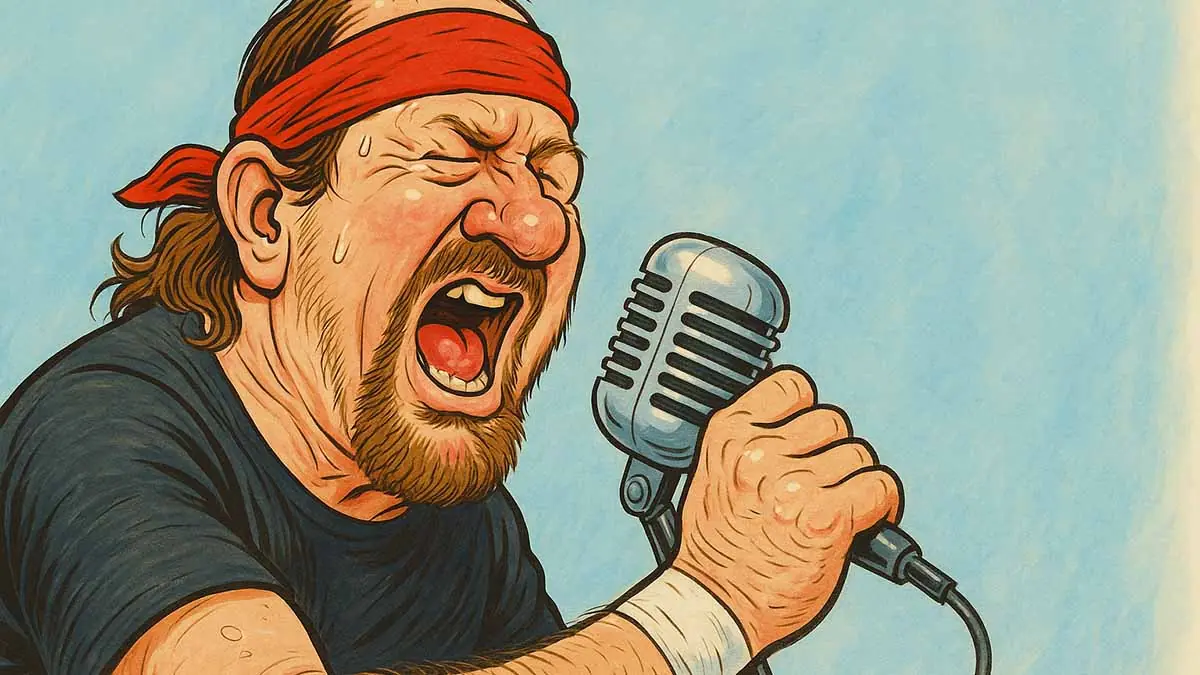Retro Review: Griffin’s ‘Fall Guys’ historically important but flawed
Falls Guys: The Barnums of Bounce by Marcus Griffin was released in 1937, making it one of the first widely-released books on professional wrestling. If you are interested in the history of the sport, it is a must-read and an important piece of literature on the topic. I would recommend, however, that you pick up the annotated version by Steve Yohe and Scott Teal, released in 2019. The two historians debunked many of the claims made in the book and gave a true sense of the history of the period.
There are many historical wrestling personalities found in Falls Guys. None more important than the Gold Dust Trio, the inventors of pro wrestling. The three men were promoter Billy Sandow, wrestler Ed “Strangler” Lewis, and mastermind/wrestler Joe “Toots” Mondt. Together they took wrestling out of barns and armories and into major arenas. Toots created the “finish” to matches, “programs” or series of matches, and “angles” or twists in storylines. Only, he did not, and a substantial portion of this historical text is made up or exaggerated.
Despite the book’s many spurious claims, its historical value remains. A quick Google search will reveal that many amateur wrestling historians believe the book to be gospel. This is especially true of the so-called Gold Dust Trio, which is the most often repeated portion of the book. Even I believed it for a time. Wikipedia, which is a not a reliable source, serves as an abridged version of a couple chapters of the book.
The idea that Mondt invented the “finish” is easily debunked. The late 1800s and early 1900s have many examples of inconclusive finishes to matches that set up rematches. This also rebukes the claims that Toots invented the “program.” As an example, Ken Zimmerman in his book Gotch vs. Hackenschmidt points out that Frank Gotch used this tactic. One example in the book is a match against Ben Roller. The two men battled to a draw when Gotch was unable to “throw” Roller in an hour. This is a widely used finish during the time. Sometimes, wrestlers agree to throw their opponent two or three or more times in a set time limit but fail. This indecisive finish was used as hype for the rematch.
In the book Ballyhoo! by Jon Langmead, the author describes a scene in a 1915 wrestling tournament where a masked wrestler appears in the audience. This wrestler showed up multiple times before issuing a challenge to the wrestlers in the tournament. In other words, they did an angle. This was a decade before Griffin claims Mondt invented the angle.
These are a few examples of the many lies, exaggerations, and unsubstantiated claims in Falls Guys. Over time, the book went out of print with only a few random copies found in scattered libraries.
In the foreword to the annotated version, Yohe describes the book becoming the topic of conversation in the 1990s. A wrestler writer named John Williams made photocopies of the book and passed them on to Yohe — who made even more copies — and, through an ad in Dave Meltzer’s Wrestling Observer Newsletter, began sending out copies to historians and wrestling fans alike. Teal eventually typed out the photocopies and made the book available to the public again.
Once it was widely available again, historians saw both the importance of Falls Guys and the flaws in it. The book makes the public aware of the characters and some of the events during the early 1900s, which have shaped pro wrestling to this day. But the flaws were evident early on and many claims were easily disputed. Griffin, who was a journalist, was on the payroll of Jack Curley’s group in 1933. Mondt, who plays a vital role in the book, was also working with Curley and historians believe Toots to be a primary source of the book’s information. This assumption is reinforced by how highly Griffin speaks of Mondt throughout.
Despite the unreliability of Falls Guys, it remains an important text, not just for making the public aware of the characters and events covered, but also what it reveals about the nature of pro wrestling.
The Gold Dust Trio was not a label that had appeared before the book’s publication, and in Falls Guys it is taken to mythical levels. The trio was not even a trio as Sandow’s three brothers were also involved. Mondt is especially lauded for his work. The other prominent figures of the period have their importance downplayed or derided. In other words, the book creates many myths regarding this era.
Bertrand Hébert and Pat Laprade’s book The Eighth Wonder of the World, describes in detail the many myths surrounding Andre the Giant. The authors acknowledges the difficulties in researching any part of Andre’s life, because those myths were so ingrained. This is also true of Brian R. Solomon’s book Blood and Fire, which covers the life of another mythical figure The Sheik (commonly referred to as The Original Sheik).
This myth making that typifies Marcus Griffin’s Fall Guys, and the lives of many pro wrestlers, is an essential piece of pro wrestling. Even today, the WWE has many examples of myth making even while openly acknowledging that the sport is worked. Lia Maivia was recently inducted into its Hall of Fame and WWE initially made claims that she was the first female promoter before lessening the claim. This ignored the many previous female promoters, including, according to historian Phil Lions, a woman in France named Anna who promoted shows in 1868 (Memorial de la Loire et de la Haute-Loire newspaper, October 14, 1868). She not only promoted, but she wrestled men.
This surrounded The Rock’s return and the creation of the “Blood Oath” storyline that linked him with Roman Reigns. Roman and Rock are linked together through familial ties, but this created a mythical bond. WWE even designed that incredible Bloodline Family Tree. All this is in the name of mythmaking.
Fall Guys did not even invent myth making. It was not the first text to reveal wrestling as worked, either. Its legacy lives on because it made this revelation in book form. There are many articles that discuss wrestling as worked that predate Fall Guys, but few if any books. Fall Guys lives on, and will continue to live on, as a seminal text in pro wrestling history and will be viewed by average fans as truth.
That is what makes Fall Guys, the annotated version, a must-read. If you are interested in pro wrestling history the original text introduces the prominent characters that formed the current incarnation of pro wrestling. It also shows how they used, and how the current industry uses, myth making as a core tenet of pro wrestling. With the annotations, Yohe and Teal enlighten readers to the real history and shine a light on the hype the industry has used and continues to use to enthrall fans.
Interested readers can use Fall Guys as a bridge to other works.
Fall Guys revels in its hyperbole like joyful children revel in their birthday celebration or Christmas. But this is still a recommended and important read, less for its facts and more for its truth about the nature of pro wrestling and its spurious history of both its athletes and those who built them up into legends.




